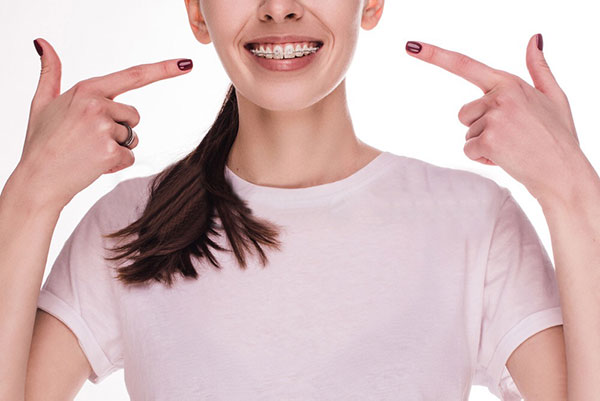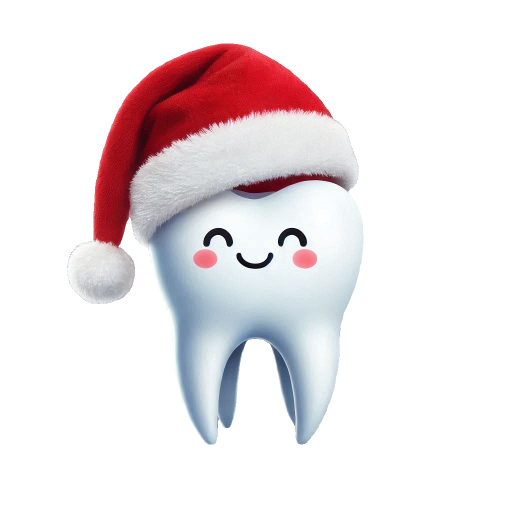Orthodontics
Orthodontics is a branch of dentistry that treats malocclusion, a condition in which the teeth are not correctly positioned when the mouth is closed. This results in an improper bite. An orthodontist specializes in making the teeth straight. Treatment can be cosmetic to improve a person's appearance, but it often aims to improve oral function.
A Balla-Dent fiatalabb generációjának szinte minden tagja részt vett gyermekkorában fogszabályozó kezelésen, így pontosan tudjuk, hogy mennyit jelent a szabályos fogsor mind a fogak megjelenése, mind az egészsége szempontjából.

Types of treatments • closing wide gaps between the teeth • aligning the tips of the teeth • straightening crooked teeth • improving speech or chewing ability • boosting the long-term health of gums and teeth • preventing long-term excessive wear or trauma of the teeth • treating an improper bite
Treatment can improve the appearance of the teeth, but it can also lead to better chewing and speech function and help protect teeth from damage or decay, in some cases.
The orthodontist uses a range of medical, dental devices, including headgear, plates, and braces, to achieve these goals. Orthodontic devices can be fixed or removable. Removable is more used to treat minor problems, such as preventing thumb sucking or correcting slightly crooked teeth. Therefore, the appliance should only be taken out when cleaning, eating, or flossing. Special removable appliances are the retainers. After treatment, these are used to stop the teeth from moving back to their original positions. If modified, they may also be used to prevent children from sucking their thumbs. Fixes appliances are the most common devices used in orthodontics. They are used when precision is essential. A person can typically eat with fixed appliances, but some foods and drinks need to be avoided, such as carbonated drinks, hard candy, gum, and other sticky foods. The essential part of the fixed appliances is braces. These consist of brackets, wires, and bands. Bands are fixed firmly around the teeth and serve as anchors for the appliance, while brackets are usually connected to the front of the teeth. Wires in the shape of an arch pass through the brackets and are fixed to the bands. As the archwire is tightened, tension is applied to the teeth. Over time, this moves them into the proper position. Follow-up involves monthly visits to adjust or tighten the braces. Treatment may last from several months to several years. Both clear and colored braces are available.
Bár sokaknak rossz a tapasztalata, a fogorvos látogatása alapulhat mosolygós, kellemes emlékeken is.

Who should see an orthodontist? If the jaws and teeth do not develop properly, malocclusion can result. In addition, the teeth will be crooked and misaligned, and the bottom and top sets of teeth may not line up. Malocclusion is not a disease, and it does not affect physical health. It is a variation in the position of teeth. However, it may impact the shape of the face and the appearance of the teeth, resulting in embarrassment, a lack of self-confidence, and even depression. Reasons include injury to the teeth or facial bones and frequent thumb or finger sucking, among others. An orthodontist can provide a night-time mouth guard to stop people clenching and grinding their teeth. A severe malocclusion may affect eating, speech, and clean teeth.
Orthodontic treatment can help treat or improve the following: - Protruding front teeth: Treatment can improve the appearance and protects the teeth from damage during sports injuries or falls. Crowding: There may not be enough space for all the teeth in a narrow jaw. The orthodontist may remove one or more teeth to make room for the others. - Impacted teeth: This can happen when the adult tooth does not emerge from the gum or bone or only emerges partially. - Asymmetrical teeth: The upper and lower teeth do not match, especially when the mouth is closed but the teeth are showing. - Deep bite or overbite: When the teeth are clenched, the upper ones come down too far over the lower ones. - Reverse bite: When the teeth are clenched, the upper teeth bite inside the lower ones. - Open bite: When the teeth are clenched, there is an opening between the upper and lower teeth. - Underbite: The upper teeth are too far back, or the lower teeth are too far forward. - Crossbite: At least one of the upper teeth does not come down slightly in front of the lower teeth when the teeth are clenched. They are too near the cheek or the tongue. - Spacing: There are gaps or spaces between the teeth, either because a tooth is missing, or the teeth do not fill-up the mouth. This is the opposite of crowding.
An orthodontist can also help solve problems such as grinding or clenching teeth and clicking or moving the jaw. Thumb or finger sucking can cause the teeth and supporting bone to become misshapen. To see a natural improvement, the thumb-sucking habit must first be.
INGYENES
When and how to start? Treatment usually starts at around 12 or 13 years, when the adult teeth have come through and developed fully. The treatments are faster and more effective at this age, but there is no age limit. It is possible to start medicines at any age. For example, our oldest patient is 67 years old; her treatment was as effective as 25 years old. Good oral hygiene is essential before any orthodontic work can begin. When devices are placed on the teeth, food particles are more likely to become stuck. Therefore, the individual will need to brush much more carefully and often to prevent tooth decay during treatment.
30 000 HUF
(ezt a kupont felmutatva elengedjük ennek a díjnak az 50%-át)
Diagnosis The orthodontist will assess the state of the person's teeth and predict how they are likely to develop without treatment. The assessment will involve: • taking a complete medical and dental health history • carrying out a clinical examination • taking x-rays of the teeth and jaw • making plaster models of the teeth Next, the orthodontist will decide on a treatment plan and makes possible all fun to begin! ????
150-200.000 HUF
Aktiválás – a kezelés terjedelmét az aktiválások száma határozza meg, melyre havonta kerül sor. Általában a kezelés időtartama 1,5 év és a fizetés alkalmanként történik.
10-15.000 HUF/aktiválás
Az itt szereplő tételeket azért soroltuk fel, hogy egy általános képet kapjon Kedves Páciensünk a fogszabályozásról. Ez a szakiránya a fogászatnak rendkívül összetett, így közel sem érintettünk minden témakört.
Ha pontos képet szeretne kapni az Ön vagy gyermeke lehetséges fogszabályozásáról, kérem keresse fel szakorvosunkat egy ingyenes konzultációra.


